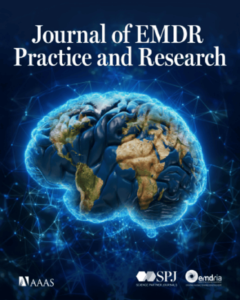Does treating emotional memories come at a price? Effects of single-session EMDR, imaginal exposure, and imagery rescripting on forced-choice recognition of event details in healthy adults (Behaviour Research and Therapy)
This laboratory study addressed concerns of impaired memory accuracy in trauma treatment, and tested whether a single session of EMDR, IE, or ImRs affects forced-choice recognition in healthy adults.
Read MoreAddiction focused EMDR therapy to treat sexual addiction in an individual with a sexual offense history: Self-report and wearable device report in a single case design (Sexual Health & Compulsivity)
This study investigated the efficacy of Addiction Focused EMDR (AF-EMDR) therapy interventions in patients struggling with sexual addiction, and aimed to determine if AF-EMDR therapy reduced craving for explicit content and other symptoms of sexual addiction.
Read MoreAffect-Focused EMDR: Clinical Strategies for Working with Relational Trauma (Journal of EMDR Practice and Research)
This theoretical article explores affect-focused EMDR, which posits that the reprocessing of affect is central to the EMDR process, rather than the reprocessing of memories or mental representations.
Read MoreDual-task interventions reduce vividness and unpleasantness in both old and new memories (Behaviour Research and Therapy)
This study provides insight into memory consolidation, dual-task effectiveness and interventions, and EMDR.
Read MoreEye movement desensitisation and reprocessing as a potential treatment for substance use disorders: Study protocol (European Journal of Psychotraumatology)
This study aims to investigate the efficacy of EMDR in substance use disorder (SUD) patients with comorbid psychological trauma.
Read MoreA common denominator: PTSD, rapid eye movements, and fear extinction (Proceedings of the National Academy of Sciences of the United States of America)
Our findings provide evidence linking gaze reinstatement and pattern completion and advance a functional role for EMs in memory retrieval.
Read MoreStress and stress reactivity in posttraumatic stress disorder (PTSD) following eye movement desensitization (EMD): A randomized controlled trial (Journal of Behavior Therapy and Experimental Psychiatry)
Study evaluated if EMD participants had less stress reactivity than retrieval-only participants after personal trauma scripts and examined changes in daily cortisol levels related to treatment outcomes.
Read MoreDisentangling eye movement desensitization and reprocessing mechanisms of action: The impact of eye movements in the eye blink conditioning task (Psychology and Psychotherapy Theory, Research, and Practice)
This study aimed to explore an EMDR mechanism of action by investigating the effect of horizontal eye movements (EM) on fear extinction learning in healthy individuals, using an Eye Blink Conditioning (EBC) task.
Read MoreEye movement patterns drive stress reduction during Japanese garden viewing (Frontiers in Neuroscience)
This study looks at the role of eye movements in the reduction of physiological and psychological metrics of stress during Japanese garden viewing.
Read MoreDo eye movements in REM sleep play a role in overnight emotional processing? (Neuropsychologia)
This article dives into the crossover between neurobiology, rapid eye movements (REM), EMDR, and emotional processing.
Read MoreEye movement desensitization and reprocessing (EMDR) improves symptoms of anxiety and depression, blood pressure, and heart rate variability in patients with hypertension: A randomized controlled trial (Psychology, Health and Medicine)
This study investigated the impact of an EMDR intervention for patients with hypertension on improving symptoms of anxiety and depression, blood pressure, and heart rate variability (HRV).
Read MoreEMDR and Emotion Dysregulation
Learn how emotion regulation patterns and neurobiological insights inform EMDR treatment for complex trauma beyond standard PTSD cases.
Read More



